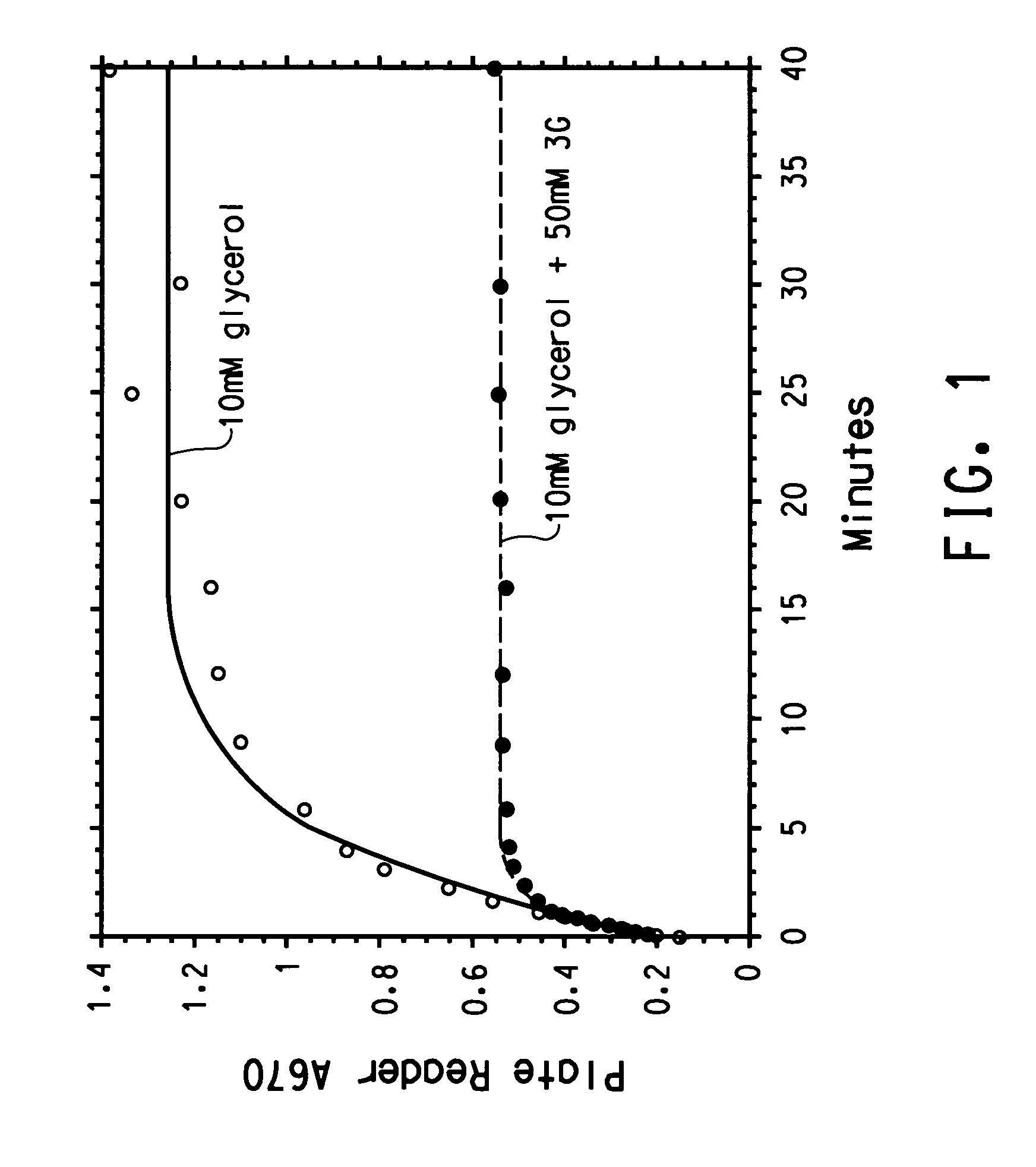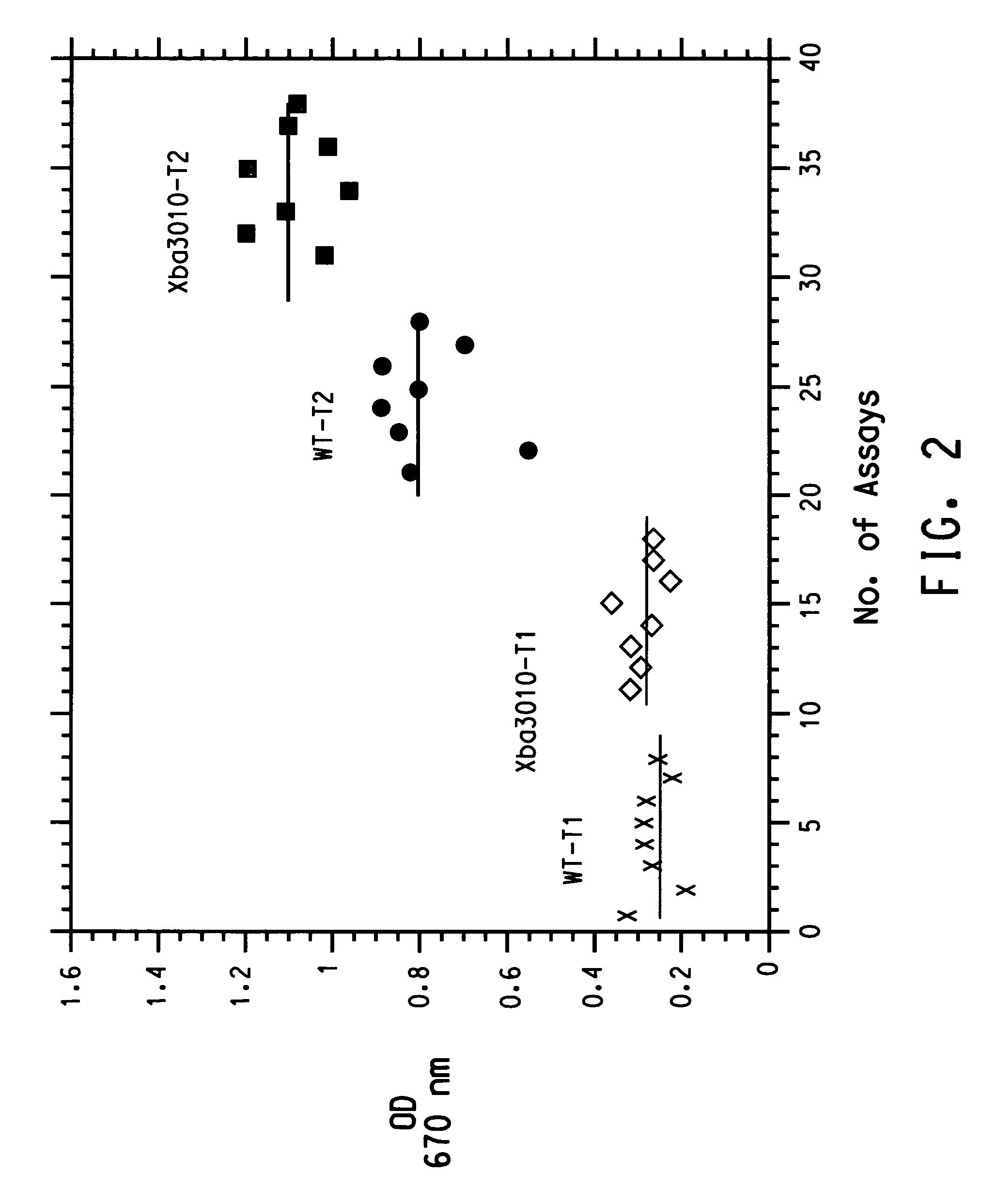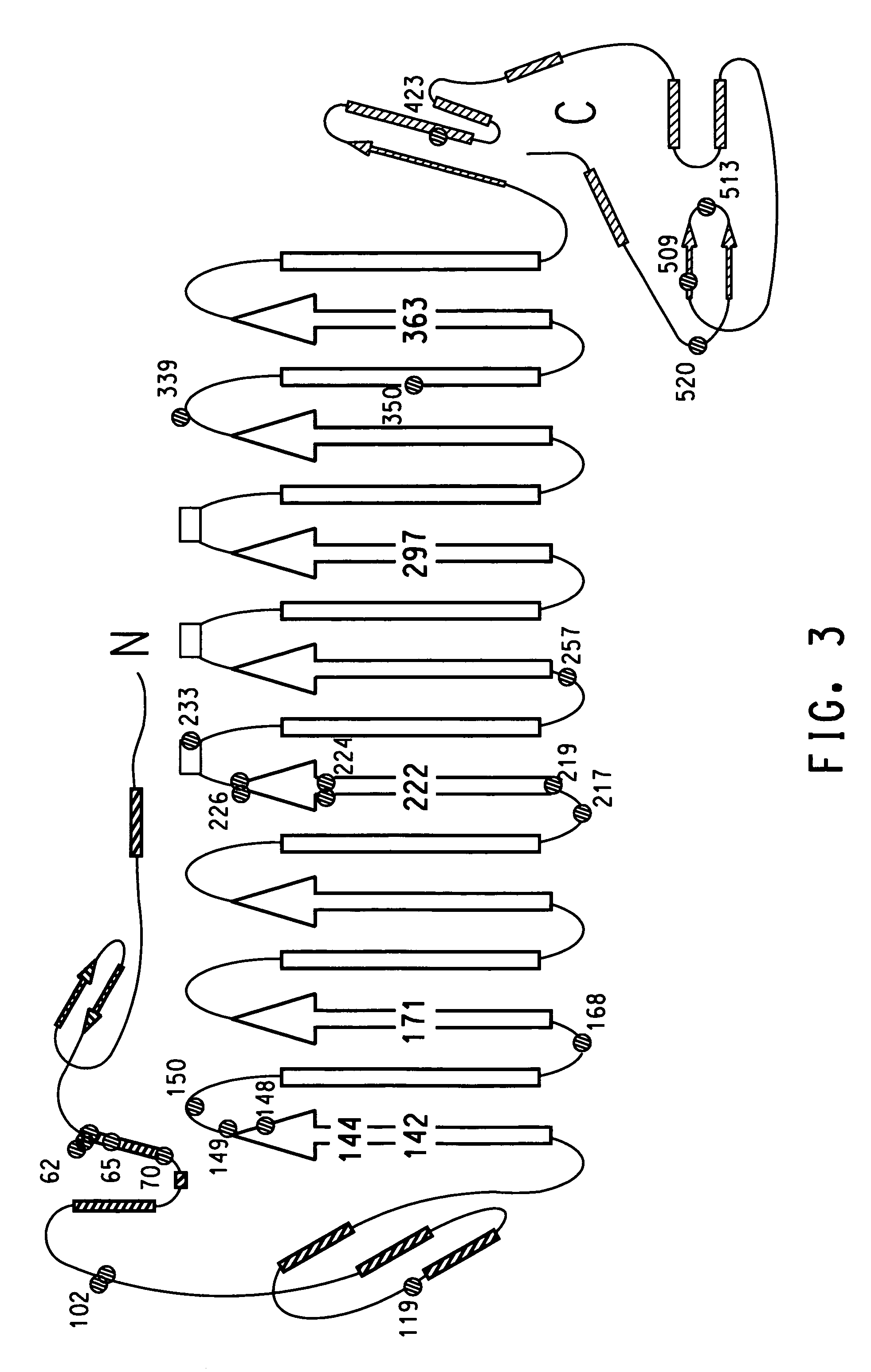B12 -dependent dehydratases with improved reaction kinetics
a dehydratase and reaction kinetic technology, applied in the field of molecular biology, can solve the problems of inherently limited dependence on dehydratase reactivation factors to restore dehydratase activity, reduce the reaction kinetics associated, and reduce the production of 1,3-propanediol, and achieve the effect of improving the reaction kinetics
- Summary
- Abstract
- Description
- Claims
- Application Information
AI Technical Summary
Benefits of technology
Problems solved by technology
Method used
Image
Examples
example 1
Construction of the “Xba-Library”
Random Mutagenesis Targeting the α-, β- and γ-Subunits of GDH
[0179]A random mutant library targeting the Klebsiella pneumonia dhaB1, dhaB2, and dhaB3 genes was created, using error-prone PCR amplification. Representative sequence analysis of the library demonstrated that there were approximately 4.2 point mutations per kB; enzyme activity measurements determined that about 15-25% of the mutants in the library were active.
Error-Prone PCR Amplification
[0180]Emptage et al. (WO01 / 12833) describes the construction of plasmid pDT2, which comprises the Klebsiella pneumonia dhaB1, dhaB2, and dhaB3 genes (SEQ ID NO:1). The plasmid pGD20 was constructed by inserting the HindIII / XbaI fragment of pDT2 (containing dhaB1, dhaB2, and dhaB3) into pBluescript II SK+ (Stratagene), which places expression of the GDH genes under the control of the T7 promoter.
[0181]A randomly generated mutant library targeting all three genes of GDH was created. First, the sequence comp...
example 2
Construction of the “Sma-Library”
Random Mutagenesis Targeting the α-Subunit and a Portion of the β-Subunit of GDH
[0186]A second random mutant library targeting primarily the Klebsiella pneumonia dhaB1 gene was generated. Representative sequence analysis of the library demonstrated that there were approximately 4.5 point mutations per kB; enzyme activity measurements determined that about 15-25% of the mutants in the library were active.
Error-Prone PCR Amplification and Mutant Library Construction
[0187]The following primers were used to amplify, by error-prone PCR using pGD20 as template, the entire dhaB1 gene and an approximately 200 bp portion of the dhaB2 gene: DHA-F1 (SEQ ID NO:5) and DHA-R2 (SEQ ID NO: 7). Error-prone PCR reactions were performed using a Clontech mutagenesis kit, as described in EXAMPLE 1. The 1.9 kB PCR products were then digested with Hind III and Sma I.
[0188]To prepare the vector, the pGD20 plasmid was digested with Hind III and Sma I (to remove the wild-type...
example 3
Regional Random Mutagenesis Targeting Amino Acids No. 141-152 (the “PpuMI-library”), 219-226 (the “4BR1-library”) and 330-342 (the “RsrII-library”) of the α-Subunit of GDH
[0190]Based on the crystal structure of GDH (Liao et al., J. Inorganic Biochem. 93(1-2): 84-91 (2003); Yamanishi et al., Eur. J. Biochem. 269: 4484-4494 (2002)), the following regions of the α-subunit of GDH were targeted for regional random mutagenesis: 1) amino acids No. 141-152; 2) amino acids No. 219-226; and 3) amino acids No. 330-342. Since each of these regions was fairly short in length, an oligo-directed mutagenesis approach was used to make these three mutant libraries. This involved a multi-step process wherein a silent mutation corresponding to a unique restriction site upstream or downstream of each region to be mutated was first created to facilitate cloning. Then, degenerate oligonucleotide primers were prepared and used in PCR reactions to mutagenize the targeted regions of the α-subunit. These muta...
PUM
| Property | Measurement | Unit |
|---|---|---|
| Molar density | aaaaa | aaaaa |
| Molar density | aaaaa | aaaaa |
| Molar density | aaaaa | aaaaa |
Abstract
Description
Claims
Application Information
 Login to View More
Login to View More - R&D
- Intellectual Property
- Life Sciences
- Materials
- Tech Scout
- Unparalleled Data Quality
- Higher Quality Content
- 60% Fewer Hallucinations
Browse by: Latest US Patents, China's latest patents, Technical Efficacy Thesaurus, Application Domain, Technology Topic, Popular Technical Reports.
© 2025 PatSnap. All rights reserved.Legal|Privacy policy|Modern Slavery Act Transparency Statement|Sitemap|About US| Contact US: help@patsnap.com



